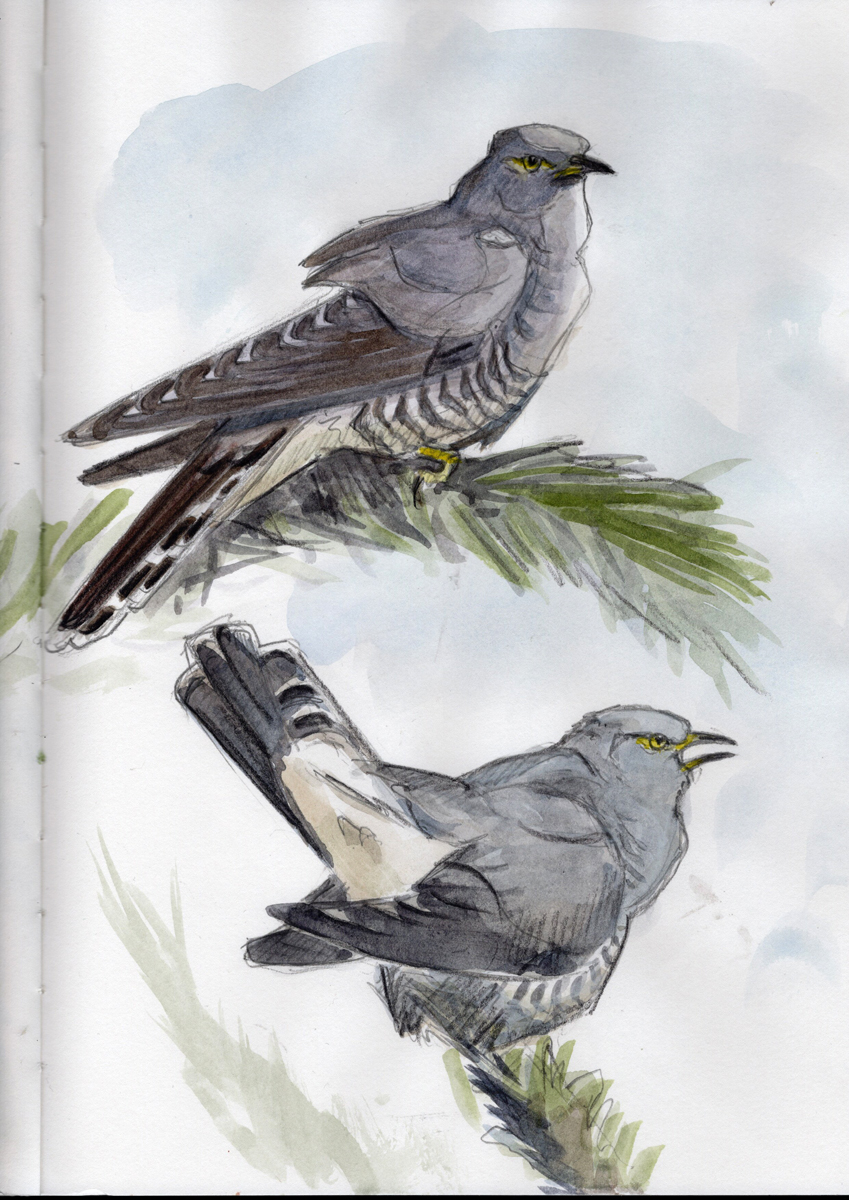Did you watch the Coronation on Saturday? I did. Well most of it,
anyway. I dont see my self as a Royalist but I do like the basic tradition of
it all. I don't agree with all the hangers on and in particular these land
grabbing Dukes and that ilk. Come the revolution they'd be first against the
wall, but King Charles III and the bairn ( not Harry) are OK by me.
While the ceremonies played out on TV a Holly Blue was in the
garden, the first Orange Tips of the year were in the Village Wood and
a Lesser Whitethroat sang by the Village Hall.
Sunday had us down to Boulmer for the first time in a while to look for
migrants. The fog was thick and lasted all morning. We covered the whole area
and didn't see the sea once. For our trouble we had 8+ Common and
3 Lesser Whitethroats, 2 Fieldfares emerged from the front bushes and immediately vanished into the gloom, 1
Whimbrel flew over, 1 Willow Warbler, a few
Chiffchaffs and Sedge Warblers, 3+ Wheatears, 1
Common Sandpiper and a Spotted Flycatcher were the total, the
latter looking incongruous catching sand flies in the fog on beach
rocks.
Quite a few waders were just about visible with
35+ Turnstone, 50+ Sanderling, 10+ Dunlin, 40+ Ringed Plover fed well
up the beach.

|
|
Apologies for the Spotted Fly image, its about 5000 ISO!
|
Back home, in the evening we were just about to head out to the Village
Hall coronation 'do' when Dan found a cracking adult male
Red backed Shrike in the fog on Seaton Point ( in the Fieldfare bushes no
less). It had just arrived. Usually they are day migrants so I pencilled in a
morning appointment with the Butcher bird...
Bank Holiday Monday...
Solid lash all day. Brilliant. At least visibility was better but the whole
thing was a right off really.
Still, I popped down to see the Shrike and got a soaking for it. When I
arrived, a Togger was right up into the bush, forcing the shrike to sit out in
an oilseed rape field. Luckily him and his two buddies soon left. They
probably heard me bleating on about bloody toggers no wonder the bird was out
in the field!
Even in the rain, the Red backed Shrike was still a stunner. An oft
used misinterpretation, but in this case the combo of pale rose cream breast,
lavender grey hood and fox red back and wings offset with highlights of black
bandit mask and black and white tail was the definition of the word. Wow. Its
years since I've seen a male RBS, most of our birds being autumn juveniles.
While watching it, Dan called that he had the Garganey tracking up the
coast from Whitley Bay. A site mega but I only had my bins so couldn't tell it
from its three Common Scoter fellow travellers.

|
|
Male Red backed Shrike, Boulmer.
|
I took Tuesday as a holiday. An offer to go out drawing with excellent artist, Paul Henery was not to be sniffed at. I could learn a lot from him. The sun
was shining and warm when we met up at Boulmer to revisit the shrike in better
light. What a treat, if it was a stunner yesterday, today it looked and
performed even better. It came quite close to us along the fence line where it
caught beetles and St Mark's Flies. When resting it would have a bit of a
sing, a chattery Sedgie type of song that sounded quite pleasant.

|
|
A few digi scoped phone shots, with haze, but what a bird...
|
From Boulmer we went to East Chevington via a short lunch stop at Warkworth to
check the Beal Bank flash. Its almost dry and the only thing of note was a
lone Avocet sweeping through the mud.
Chev was typically full of interest and not all good! We were busy sketching a
male Marsh Harrier that was sat in a hawthorn when a chap came around the
corner. He was quite hurried and said....
no lie... 'Is the Skah-oop still showing?' Paul and myself paused for a second
wondering what on earth he was on about when it dawned on me. I replied 'Sorry
mate, I've no idea if there is a Scaup here, I've not really looked yet'.
Skah-oop? or maybe Ska-oup but either way it was a double barrelled single
syllable name that's for sure! Certainly a new one on me.
A quick scan revealed the said drake Scah-oop ( just to clarify if any none
birders are reading, its pronounced 'Scorp' not even Skowp let alone
Ska-oop). If you are the person in question, apologies but come on...
From the south end viewing spot were a pair of Marsh Harrier, a drake Scaup
with a drake Pochard and a few Tufted Ducks, 2 imm drake Goldeneye still, a
singing Cetti's Warbler and plenty of Reed Warblers singing too.
All too soon it was 4pm and time for home. A grand day out.

|
|
Paul getting some lines down...
|

|
|
Top - Tuesdays sketch and bottom the bird on Monday in rain.
|
A short clip of the King of the Bank Holiday....




























